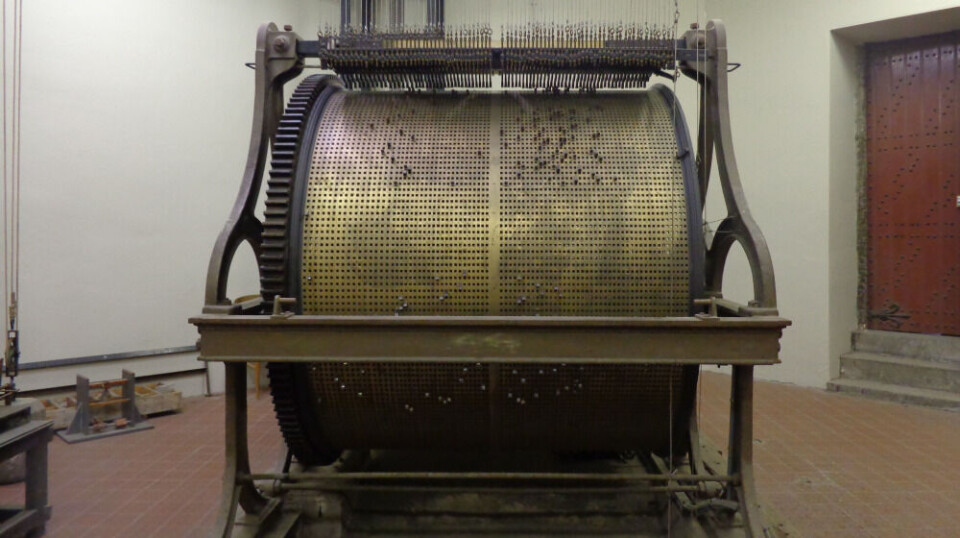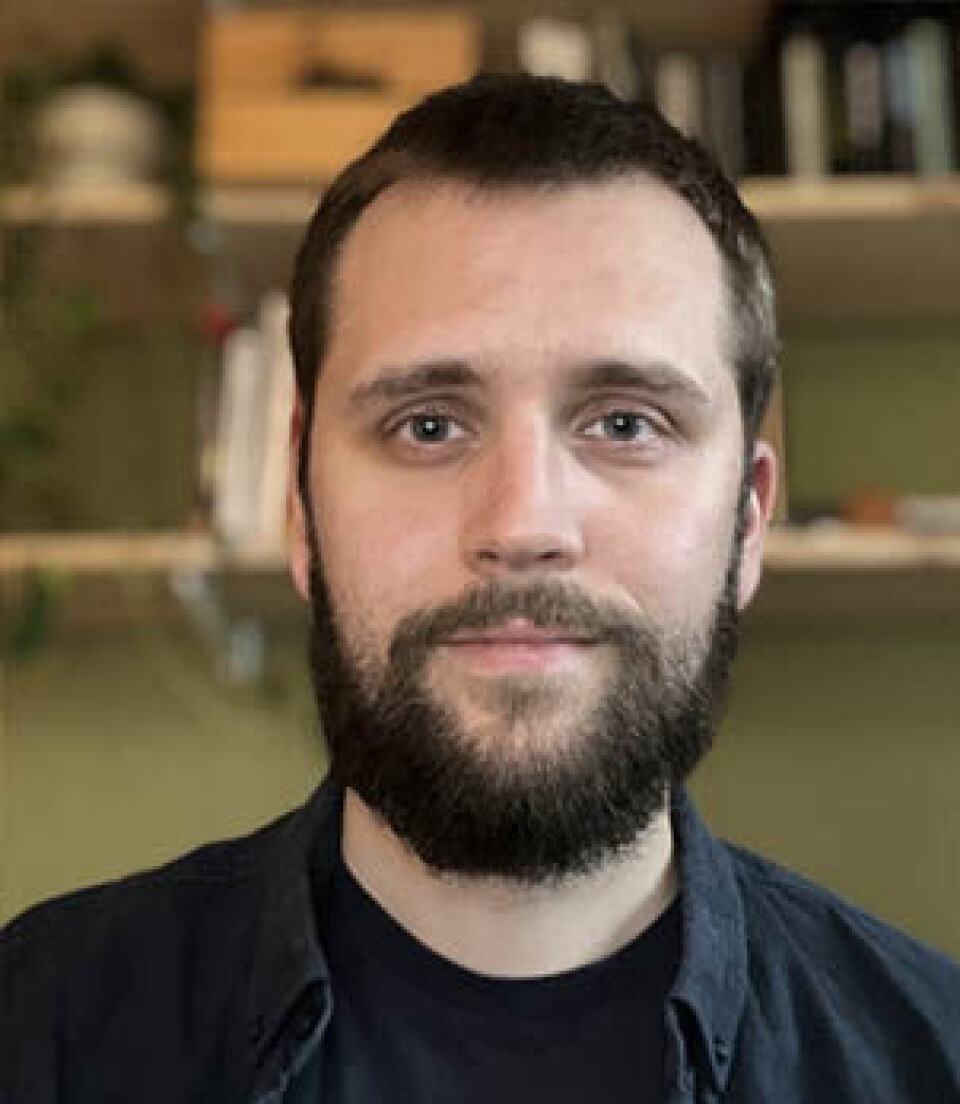THIS ARTICLE/PRESS RELEASE IS PAID FOR AND PRESENTED BY University of Oslo - read more

In the past, it was a challenge to make machines play music. Today, the challenge is to make the music more human and creative
"Rhythmic ideals have changed," a researcher says.
Machines have been making music for hundreds of years. In Belgium and the Netherlands, you can still hear music from ancient bell towers. Carillons are programmed by inserting small pins into holes on a large rotating cylinder.
These carillons share a common feature with your mobile phone: They can play music programmed by humans, and they can play by themselves.
“We easily think that digital technology is a revolution and that everything is new. However, humans have always been interested in how technologies can help them control the dimension of time in music,” Bjørnar Sandvik says.
He is a music researcher at RITMO Centre for Interdisciplinary Studies in Rhythm, Time and Motion at the University of Oslo.
The practice of ‘time tinkering’
In his research, Sandvik has studied various practices of what he calls ‘time tinkering’ – the deliberate experimentation with time, structure, and rhythm in contexts of producing machine rhythm.

“My approach is based on a simple yet often overlooked premise: The very concept of machine rhythm presupposes a process where music is stored or represented on a physical material, and thus ‘frozen’ in time. While time flows irreversibly, media technologies make it possible to manipulate and experiment with the placement of sounds along the time axis,” Sandvik says.
Humans have done this since antiquity, he adds. Grids have been a crucial throughout this process.
“If you want a carillon or a music box to produce rhythmic music, you need to place pins at the right distance from each other. For that, you need a grid – a spatialised time axis – to attach the events to,” he says.
Even today we use the same principle, he points out.
“Many of the techniques used to compose and edit music with digital production tools are possible because the music is presented visually and graphically to us on our screens. This gives us events to move along the time axis or organise in a grid on the screen,” Sandvik says.
An ideal that changed
Sandvik has examined both the historical development and time tinkering in machine music today. The grid has influenced the way rhythms have been programmed and understood in different technological eras, he explains.
“In the past, a common challenge was to make machines play music that had already been composed as notes on paper. Thus, the ideal was to surpass the human ability to follow the notation and play on grid. In the digital age, the challenge is often the opposite,” he says. “It is easy to get a modern computer to play on the beat. The challenge is to make it go off grid and do it in a human and creative way.”
Today, software programs used in music production offer automatic time correction features. There are also several other functions that can synchronise events precisely on a common grid.
“This makes it more interesting to move and juxtapose single elements in order to create rhythmic friction,” he says.
The mechanical sound
Humans have always experimented with different types of microrhythms by deviating from a note-based norm.
During the last hundred years, this has shaped the development of rhythmic genres within popular music such as jazz, rock, blues, funk, and soul, Sandvik explains.
“However, for a long time, it was complicated, resource-intensive, and time-consuming to explore such microrhythms in machine programming. This is one of the reasons why machine rhythm has gotten a reputation for being ‘mechanical’ and ‘perfect’, even though we no longer have such limitations today,” he says.
The new standard
At the turn of the millennium, digital recording technology made it possible to move sounds along the time axis in a new and far more flexible way.
This led to a new trend where songwriters seriously began experimenting with microrhythm in pop music.
Today, manipulation of time at a micro level is central to the compositional practice of music producers – in fact, it is the new standard, according to Sandvik.
“Digital recording technology makes it much easier to try and retry different timings. You can make repeated recordings without losing the original or compromising sound quality. It is easy to program intricate rhythmic patterns, or place recorded sounds wherever you want along the time axis on your screen,” he says.
It is (almost) unnoticeable
As part of the research project Timing and Sound in Musical Microrhythm (TIME), Sandvik interviewed several producers of electronic dance music (EDM) and analysed their music.
“The fact that EDM is characterised as dance music may seem paradoxical to some. According to rhythm research, music should deviate from the beat to create groove and a desire to dance. The rhythms in EDM are often perceived as predictable and strictly on the grid," Sandvik says.
However, only a few milliseconds of deviation is needed to create groove - so little that listeners often do not even notice it.
In their analysis of EDM, Sandvik and colleagues have found that producers employ various techniques to create groove.
“Producers work hard to achieve rhythmic friction against the grid, by either moving the temporal onset of events or by shaping how the sounds and their intensity themselves unfold in time. Such techniques are crucial for the grooves to be successful,” he says.
Reference:

This article/press release is paid for and presented by the University of Oslo
This content is created by the University of Oslo's communication staff, who use this platform to communicate science and share results from research with the public. The University of Oslo is one of more than 80 owners of ScienceNorway.no. Read more here.
See more content from the University of Oslo:
-
How international standards are transforming the world
-
A researcher has listened to 480 versions of Hitler's favourite music. This is what he found
-
Researcher: "AI weakens our judgement"
-
New, worrying trend among incels, according to researcher
-
Ship’s logs have shaped our understanding of the sea
-
New study: The dilemma of copyright in the Global South
Bjørnar Ersland Sandvik. 'Time Tinkering: On Grids, Waveforms, and Techniques of Machine Rhythm', Doctoral dissertation at the Department of Musicology, University of Oslo, 2023. (The dissertation)




































